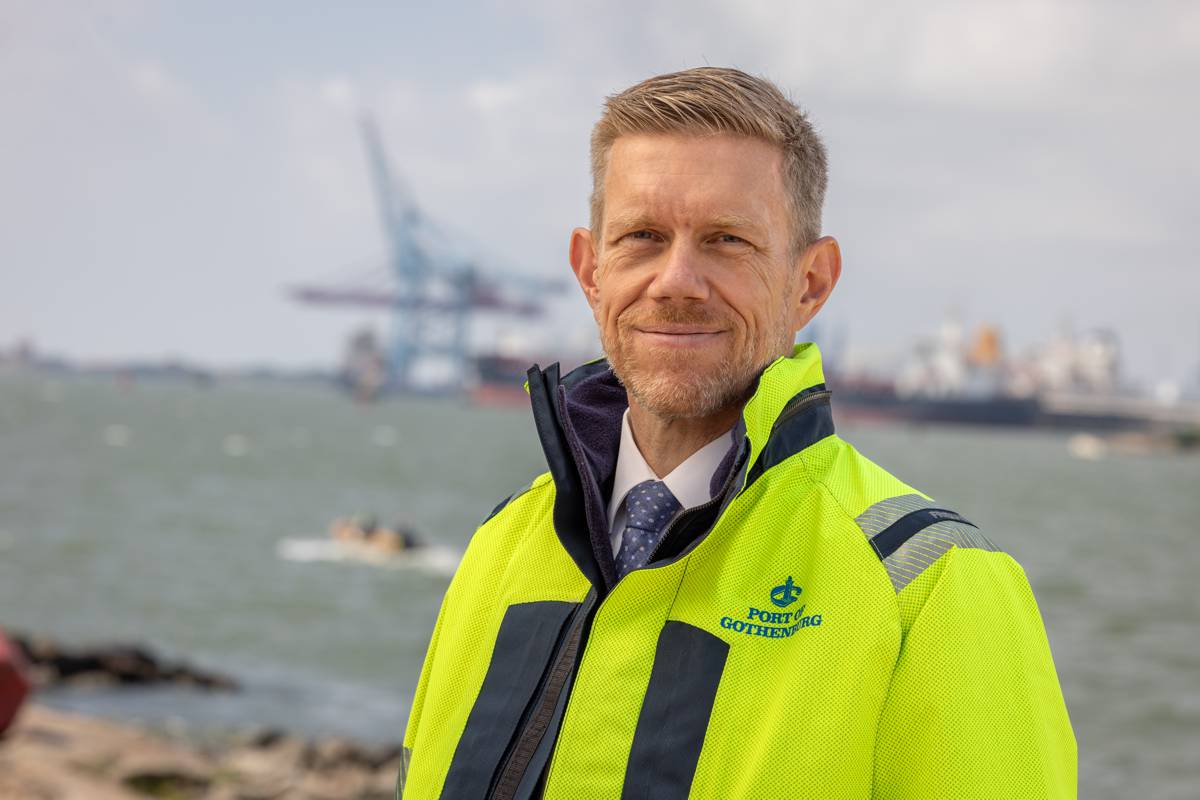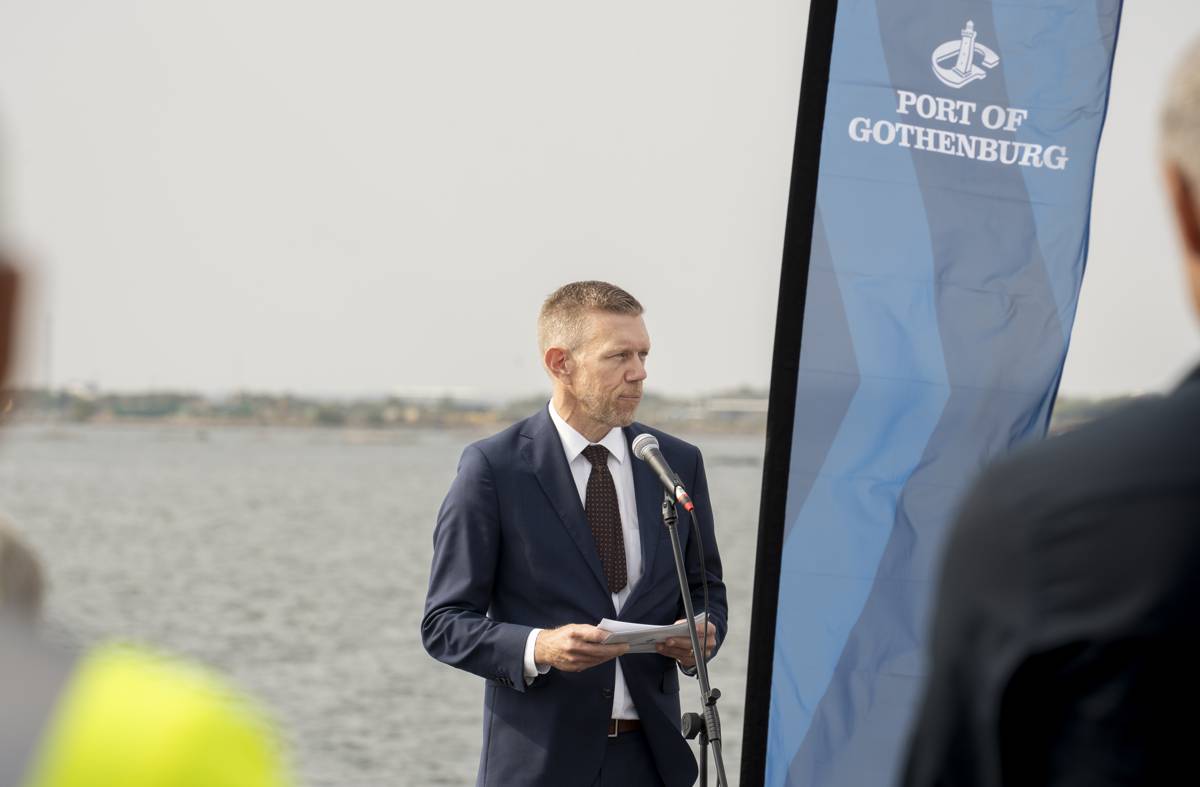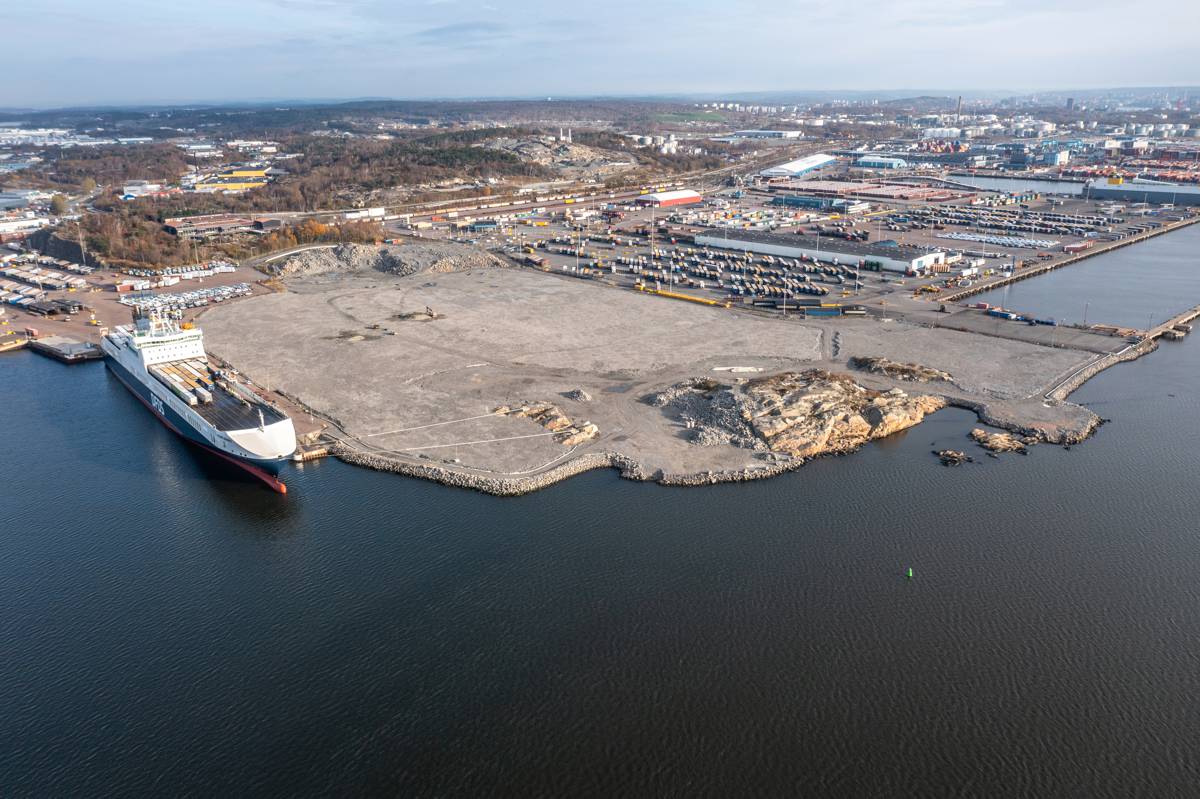Port of Gothenburg unveils largest Terminal Development in 40 Years
In a monumental move to bolster Sweden’s maritime infrastructure, the Port of Gothenburg has unveiled Arendal 2, its newest 144,000-square-metre terminal. This €60 million investment marks the largest expansion in four decades, reflecting a commitment to meet the burgeoning transportation needs of Swedish industry. After six years of meticulous planning and construction, this state-of-the-art terminal is set to redefine the logistics landscape, driving growth and efficiency at Scandinavia’s busiest port.
Göran Eriksson, CEO of the Port of Gothenburg, expressed the significance of the project: “This terminal began planning as early as the 1990s and then we talked about future-proofing. Now that future is here, and this terminal is needed to meet the transportation needs of Swedish industry today, which are also expected to continue growing over time.”
Arendal 2 isn’t just about expanding capacity; it’s a strategic move that reflects the port’s long-term vision of concentrating terminal operations in the outer harbour area. This relocation reduces urban congestion, enhances direct connections to critical road and rail infrastructure, and strengthens Gothenburg’s role as a key player in Sweden’s industrial ecosystem.
A Game Changer for the Port
The expansion comes at a pivotal moment as the Port of Gothenburg prepares to welcome new operations from Stena Line, one of the world’s largest ferry operators. With plans to move its current facilities from the city centre to the outer harbour, Stena Line’s relocation is set to capitalise on the enhanced capabilities of Arendal 2. This shift not only relieves congestion in the city’s heart but also aligns with the port’s broader strategy of optimising space and streamlining operations.
The development has been carefully engineered to accommodate future needs, including preparations for Stena Line’s new ferry terminal. Although this transition remains a few years off, the groundwork laid by Arendal 2 ensures that Stena Line’s integration into the port’s new landscape will be seamless.
“It’s still a long way off, but the construction of this terminal has certainly taken Stena Line’s relocation into account. Stena Line will use parts of the new terminal area, while other adjacent terminal areas can also be made available in the relocation process,” Eriksson confirmed.

A Circular Approach to Construction
Sustainability has been at the forefront of the Arendal 2 project, with innovative engineering solutions setting new standards for eco-friendly construction. One of the standout features of the terminal’s development was the encapsulation of 180,000 cubic metres of contaminated dredged materials from the Göta River. Instead of transporting these materials away, they were stabilised and solidified on-site, forming the very foundation of the new terminal.
This method not only reduced environmental impact but also minimised transport emissions and costs. The contaminated sediments were transformed into a stable base for the terminal, demonstrating a commitment to circular construction practices that align with modern sustainability goals.
Eriksson, noted: “We have hit two birds with one stone here. We have both managed to clean the river and dispose of dredging material locally without unnecessary transportation. This has been done in a safe and environmentally friendly manner under a strict control program. The goal of reusing as much material as possible has been very successful in this project.”

Enhanced Efficiency for Gothenburg Roro Terminal
Arendal 2 is already making waves, with parts of the terminal being utilised by Gothenburg Roro Terminal, a key operator at the port. Previously managing operations across two separate areas, the terminal now benefits from a larger, contiguous space, vastly improving operational efficiency. With enhanced access to berths 712 and 713, the terminal’s logistics flow is smoother, faster, and more reliable.
This new configuration optimises operations for all stakeholders, offering improved conditions for conducting business while enhancing the overall competitiveness of the Port of Gothenburg. For operators and clients alike, the new terminal represents an opportunity to streamline supply chains and reduce turnaround times, making Gothenburg an even more attractive hub for international trade.
Eriksson summed it up: “Overall, Arendal 2 is a solution where the involved actors get even better conditions to conduct their respective operations while the Port of Gothenburg as a whole is further optimised and becomes more competitive.”

Key Features of Arendal 2
Arendal 2 is more than just a new terminal; it’s a testament to modern engineering and sustainable thinking. Here are some of the key features that set it apart:
- Size: Spanning approximately 144,000 square metres, the terminal is designed to handle high volumes of cargo with ease.
- Infrastructure: The site includes 42 kilometres of ducting, 11 pump stations, and 250 wells, all integrated to support a robust operational environment.
- Environmental Measures: A dedicated stormwater treatment plant ensures that runoff is managed responsibly, aligning with the port’s sustainability goals.
- Lighting: Nine lighting masts provide the illumination needed for 24/7 operations, enhancing safety and efficiency.
- Investment: The project represents a €60 million investment, underscoring the port’s commitment to future growth.
These features collectively enhance the port’s capacity to handle increased cargo volumes, streamline operations, and reduce environmental impacts.

A Timeline of Transformation
The road to Arendal 2 has been a long and complex one, reflecting years of planning, engineering, and commitment to sustainable growth:
- Late 1990s: The concept of a new terminal at Arendal Bay is included in the Port of Gothenburg’s master plan.
- 2015: The Land and Environment Court grants permission for the construction of a new cargo terminal.
- 2016-2017: Pilot projects are conducted to test stabilisation and solidification techniques for contaminated dredged materials.
- 2018: Groundbreaking begins, with 1,500 piles driven into the seabed to secure the terminal’s foundation.
- 2020: The enclosure of Arendal Bay is completed, and the bay is filled with stabilised dredged materials, marking a significant environmental achievement.
- 2021-2022: Detailed design work for the terminal area commences, followed by procurement of contractors.
- 2023: The final phase of construction includes extensive blasting, crushing of rock, and installation of critical infrastructure.
- 2024: Arendal 2 is completed three months ahead of schedule and inaugurated on August 29, signalling the start of a new chapter for the Port of Gothenburg.
This timeline underscores the scale and complexity of the project, illustrating the port’s unwavering commitment to enhancing its facilities and capabilities.

Strengthening Sweden’s Gateway to the World
The Port of Gothenburg, already the largest in Scandinavia, is poised to build on its legacy with the addition of Arendal 2. Handling 20% of Sweden’s foreign trade and over half of its container traffic, the port is a critical gateway for Swedish industry. The expansion reflects the port’s commitment to sustainability, innovation, and digitalisation, ensuring it remains at the forefront of climate-efficient freight transport.
With over 30 rail shuttles offering daily, climate-neutral services, and a robust network of shipping routes, the Port of Gothenburg continues to guarantee efficient, reliable access to global markets. The inauguration of Arendal 2 isn’t just an expansion; it’s a strategic leap towards a smarter, more sustainable future in freight and logistics.



















